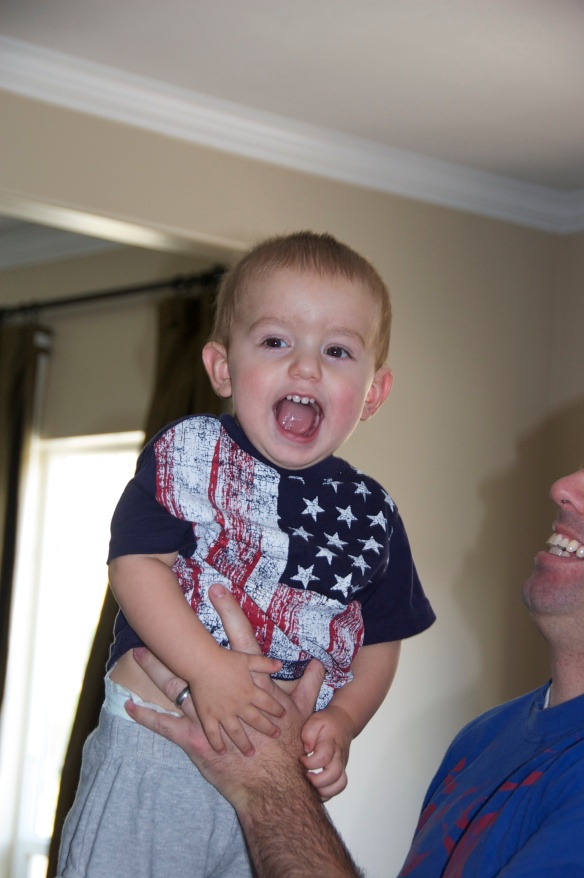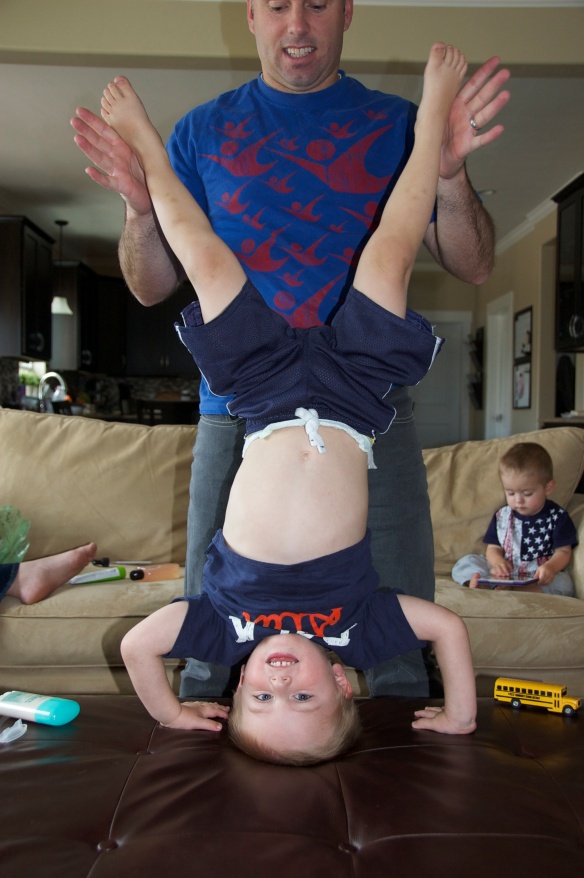Wow, it’s alarming how I have neglected to write on my blog. April consisted of doing hundreds of hours worth of research for my final papers, and then I had to write them in May. Talk about not enough hours in the day. So here we go…
[Deep breath] in mid-April I called up my friend, Khadim Bousso, who I know through my internship at PARRER and asked if he’d be willing to do an interview with me to help me in my immediate and long-term research. He gladly accepted, and he invited me to his cousin’s house so he could act as translator. Khadim is 33 years old and is one of the oldest sons of the Imam of the Great Mosque in Touba, the spiritual and cultural center of the Mouride brotherhood (Sufi Islam). Khadim’s great-grandfather was Cheikh Hamidou Bamba Mbacke’s marabout and uncle. (Cheikh Hamidou Bamba is also known as Serigne Touba, and he’s the founder of Mouridism). Familial ties create father/son/daughter relationships between an uncle with his nephews and nieces. Similarly, mother/son/daughter relationships exists between aunts and her nephews and nieces. So let’s put this into context… if I were to apply this notion to myself, my sister’s children would be considered my children, and I would be considered my aunt’s daughter. Therefore, since Serigne Touba’s uncle was a Bousso, the Bousso line is considered to be descendants of Serigne Touba, and that makes Khadim one of Serigne Touba’s grandsons. Since Serigne Touba was taught by a Bousso, all of the educational and teaching responsibilities in the Mouride brotherhood are controlled, delegated, and carried out by the Bousso family. They’re also in charge of protecting and maintaining the tomb of Cheikh Hamidou Bamba. The Mbacke family (specifically the male descendants of Serigne Touba) are named the khalif of the brotherhood. That position is essentially the civic and religious leader of the whole brotherhood – and the brotherhood had millions of adherents throughout West Africa, parts of Europe, and there’s even a fairly substantial population in New York City. So it was a big deal to have Khadim agree to do an interview with me.

Khadim Bousso
After our interview, we at dinner with a couple of Khadim’s brothers, Ndiamé (his cousin), and Sokhna, Ndiamé’s wife. Ndiamé and Sokhna have a 6 month-old girl named Khadija, and Khadija and I became fast friends. It was a very pleasant evening, and when I said that I hadn’t been to Touba, Khadim offered to drive me there one weekend when he went to visit his family.

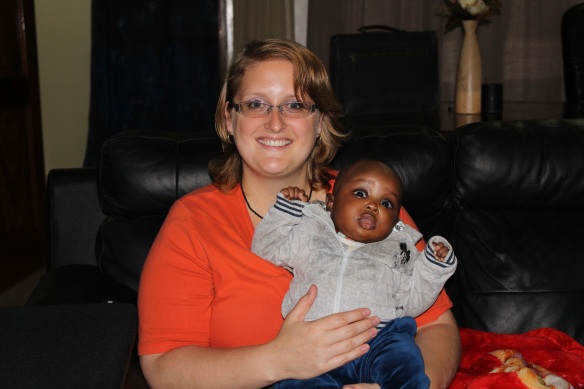
Khadija
So a couple of weeks later, he and I, along with his mother and a couple of other relatives made the (normally) 4-hour trip into the interior of the country. We arrived fairly late due to traffic and having to stop in almost every little town so we could greet other friends and family members. Finally around 10 pm we made it to the Bousso’s traditional home, and after dropping our things off, Khadim took me around the city. An arched gateway leads to what we would call the “city center,” and it is illegal to drink or smoke beyond that point. Guards stop cars before they enter, but since they recognize Khadim’s car, we just drove right on through. The Great Mosque is located on a huge tract of land right in the middle of the city. It sits on a gated plot of land and the ground surrounding the mosque and various annexes is completely covered in large marble slabs. There’s no grass – just marble. The whole outer elevation of the mosque is made of marble slabs and mosaics imported from various European countries. Five minarets surround the mosque itself (they’re in the middle of building 2 more), and smaller buildings surround it house the tombs of Serigne Touba’s sons who were the khalifs after his death. Workers have been repairing broken pieces of marble and/or mosaics, so along with the construction of the two new minarets, most of the mosque was covered with scaffolding.

It’s enormous – I couldn’t even get all of it in my shot

The entrance to the room outside of Serigne Touba’s tomb
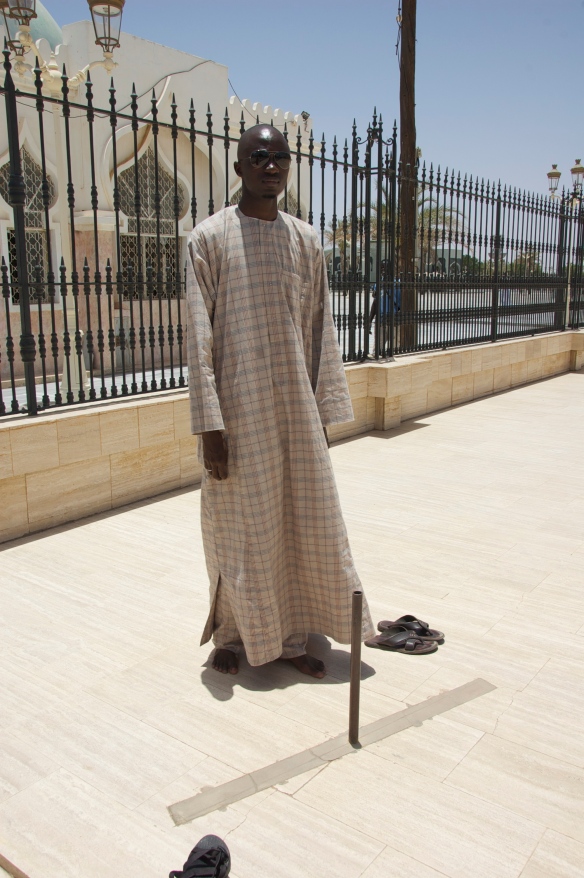
There aren’t any clocks on the buildings in Touba. They tell the time by this sun dial – which was laid by Khadim’s family several years prior to the construction of the mosque




We walked around the gates, and when we reached a section of the sidewalk that faced the library Khadim and his brothers took off their shoes and walked barefoot until a designated spot further down the sidewalk. I asked if I should remove mine, as well, but they said that I wasn’t required to. Evidently hundreds of copies of the Koran are buried underneath that section of the sidewalk. After we were done walking around the mosque, he took me around in his car to show me other areas of town (and he stopped to get a haircut), and then he took me back to the traditional home. He said that his family has several houses in Touba and in a neighboring town (and in Dakar), but he didn’t want me to stay there because he wanted me to have the experience of staying in a traditional house. I thought that was pretty cool.
When we returned, his mother, sisters, and sisters-in-law had dinner prepared (at 11:30 pm), and they pulled a mattress and grass mats into the sandy courtyard and we sat and ate dinner with our hands in a communal bowl. Some of them spoke French, but mostly they spoke Arabic and Wolof – so it was kind of entertaining to try and communicate. The little kids thought I was something else – a toubab (white person) doesn’t stay with them very often, so I had a lot of little pairs of eyes silently staring at me in the darkness. The family had me go to bed around midnight or shortly thereafter. However, everyone else, including the little kids, stayed up for at least another hour.
The next morning I took a bucket shower and had bread, scrambled eggs and warm powdered milk for breakfast. I’m actually going to miss the powdered milk they have here – it’s fairly thick and creamy and has an interesting sweetness to it. When Khadim woke up and finished eating we went back to the mosque – I was excited to go in, but I didn’t realize there were certain parts that Christians aren’t allowed to go in. They asked me to take my sandals off when I entered the gate. Unfortunately, the marble was already extremely hot from the sun (it’s significantly hotter in the interior of Senegal than in Dakar) and within seconds a large water blister formed across the length of the balls of my right foot. It HURT!! And it takes a while to cross the complex, so I had to walk that way for quite a distance. At one point Khadim turned back and saw my face and he felt really bad – he said that he forgets that most Westerners aren’t used to walking everywhere and anywhere barefoot and have sensitive soles. He took me to the outer chamber that leads to the Cheikh Hamidou Bamba’s tomb. It was really interesting to see peoples’ reaction when he walked in – they were lined up waiting their turn to enter the tomb. I asked if he knew them and he said he knew a few, but that he didn’t know the grand majority of them. But they certainly knew him. He doesn’t dress differently than any other Senegalese men, so I’m guessing that the Bousso and Mbancké genes are very recognizable.
Unfortunately he didn’t take me to the parts of the mosque that Christians are allowed to see. So I didn’t get to see much of the inside – but what I did see was pretty impressive. We left the complex (which means I had to walk on those hot slabs again!) we drove to his friend’s house and watched TV for several hours. The little kids filed in and out of the room where we were. Some of them were really inquisitive and brave, others were really shy and didn’t know what to do as they stared at me, and one 4 year-old girl, Khadija, was a complete ham. She pointed at my camera and started striking poses. So I humored her and snapped away. Some of her other friends joined in, so she definitely acted as an icebreaker. She was a blast. Then I had to go around to the various parts of the house and meet everyone, especially the mothers and grandmother.

Cheikh

Khadija

We went back to Khadim’s house later that night, and once again, they pulled out mats and mattresses so we could eat dinner on the ground. After we ate we laid out under the stars, and they gave me Wolof lessons (and laughed at my attempts to formulate more complicated sentences or learn new vocabulary words). Then they all wanted me to teach them some English – and then it was my turn to laugh good-naturedly with them. The little kids picked up on it fairly quickly. Around 10 pm the older boys (probably between 9-15) came home from their long day at the daara (Koranic school). They had their tomato cans tucked under their arms – so they definitely have a different experience as talibés than most of the young boys that I’ve seen and worked with in Dakar. They go to the daara at sunrise for a few hours to learn their verses, and then they spend some time begging, followed by attending a Franco-Arabic school (reading, writing, math, etc). Then they spend a few more hours back at the daara and out on the streets begging before heading home well after dark.
It was a lot of fun to spend time with Khadim’s family and see how people live outside of Dakar. They asked about my family and my interests. When they asked what my Senegalese name was (Awa Seck), Khadim’s mom said, “My name is Awa!!” And she was tickled pink. She followed that up with, “But your name is no longer Awa Seck. It’s Awa Bousso. You are part of our family now, and you’re now named after the wife of Serigne Touba.” I was really touched by that. We stayed up for another hour or so to enjoy the coolness of the night air, and then I went to bed.

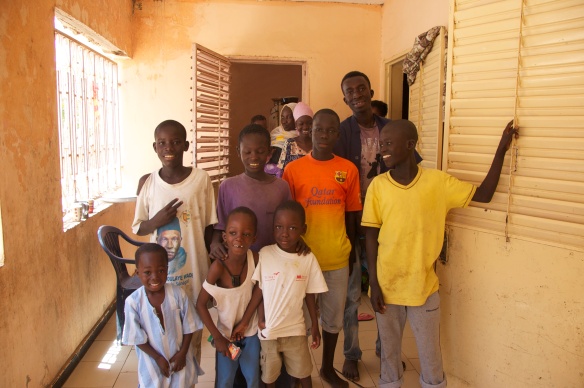
Khadim’s family
We left earlier the next day so we could go to the library – that didn’t end up happening, but it was still good to be in Touba and meet the people I did. Maybe another time when I’m in Senegal I’ll get to go see more of the mosque and the library. All in all, I’m really glad that I went.









